Harvesting & Drying Black Walnuts (+hull & leaf uses!)
Learn how to forage, identify, and harvest black walnuts (Juglans nigra) plus how to dry and cure the nuts, and use the hulls and leaves for remedies!


ID Tips for Black Walnuts (Photo Identification)
Black walnut is a native tree, for those of us who live in Eastern North America. It’s a tall beautiful tree, that not only provides shelter, shade, and food for wildlife, its valuable lumber is prized for making furniture.
We mainly find large groups of them growing around our creeks, but they’re also a common backyard find if you live in older neighborhoods.
It’s fairly easy to identify a black walnut tree in autumn, when the ground beneath is littered with fallen nuts!
Here are some tips for identifying using leaves and bark as well.
The leaves:
Black walnut trees have compound leaves that are made up of ovate-oblong to ovate-lanceolate leaflets with serrated edges and pointy tips. The leaflets are arranged alternately along a shared stem, though sometimes you have to look closely, since they can appear to be almost opposite from each other. The leaves also carry some of the same distinctive citrusy-antiseptic scent the nut does.
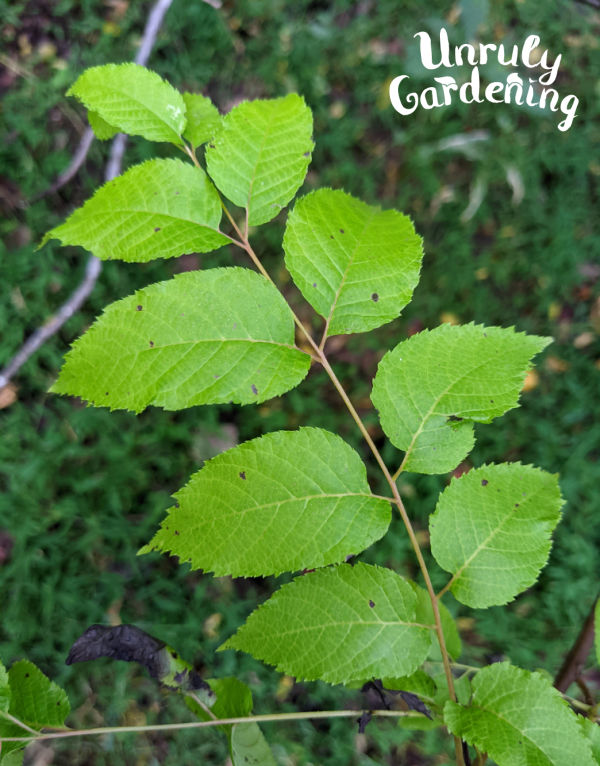
The bark:
Black walnut bark is dark grayish brown with deep furrowing and ridges. The heartwood is a rich dark brown, and prized for furniture making and other woodcraft.
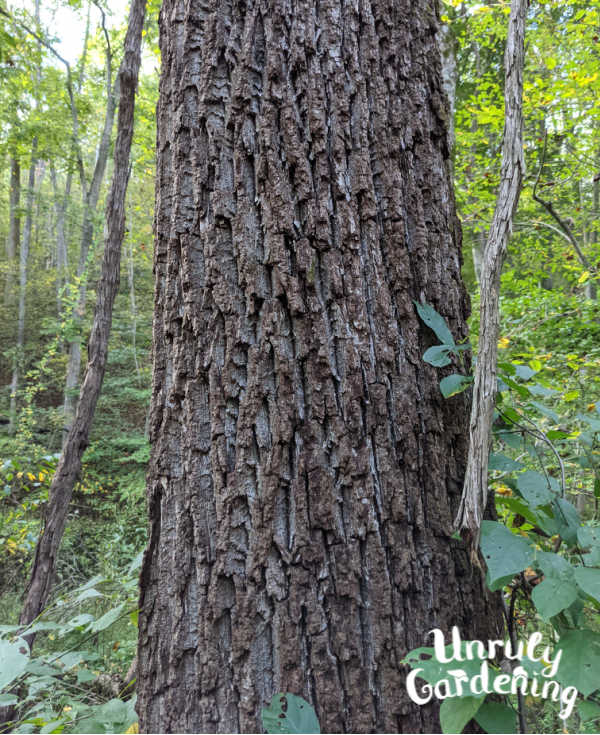
The nuts:
Black walnut trees produce an abundance of round nuts.
The green hulls are rough and somewhat resemble an under-ripe orange. They have a distinct smell; it’s a strong earthy, medicinal smell, with a citrus overtone. The hulls turn brown/black when left on the ground, or when damaged, so many of the green hulls may have brown/black spots and cracks, especially if the tree is very tall, and the nut is falling from a great height.

The inside of the green hulls are spongy, fibrous, and yellowish in color, which darkens quickly with exposure to the air. The inside of the black hulls- or just underneath the black spots on your nut hulls- are often a pitch-black, inky mess, usually with some number of little worms squirming around. Don’t worry, this doesn’t mean your nut is bad! Those worms are just in the hull, not eating on the nut itself.
In both of these types of hulls, there’s a single nut. Without cleaning, this will have a pretty good amount of the pulpy insides of the hull still attached. Once cleaned, it will be revealed that you have a brown nut- sometimes with some black staining- striped with deep ridges. Little green patches may appear on the nut as it dries.
Cracking the nut itself open (which is no easy task!) reveals a heart-shaped cavity. You can see this in the picture above. The nutmeat inside is white in color, with a papery brown husk.
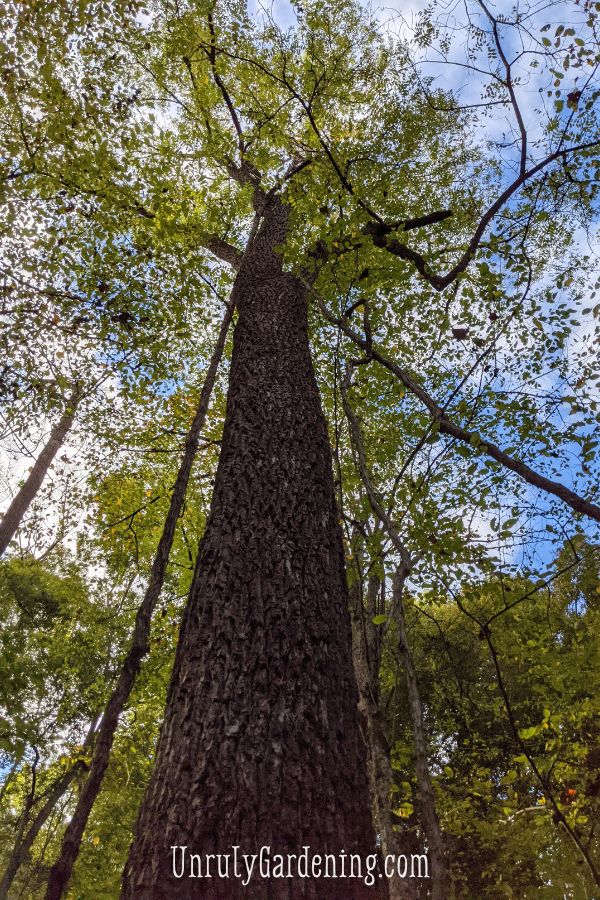
When to Harvest Black Walnuts
When fall begins to approach, and you can hear the nuts start to fall from their trees, go out in the woods and start looking for black walnuts! Depending on where you live, this could be around September or October.
You’re looking for mostly green nuts, so leave any that are completely inky black where they lay. A few black spots or cracks aren’t bad, but leave the super-soft ones, the ones that ooze a black, inky liquid when you squeeze them.
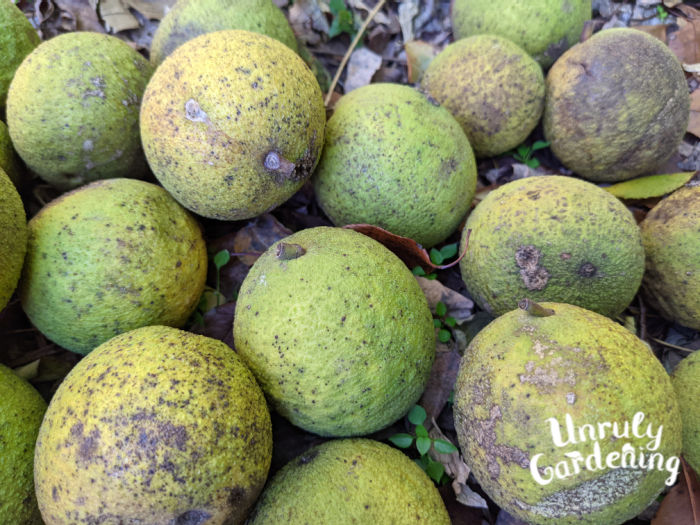
To check whether your black walnuts are ready, press your thumb into the hull- if your nuts are part green, part black, press into the green part. Your thumb should easily be able to make a visible dent in the hull. If the hull is super hard and doesn’t give at all under your finger, it’s likely under ripe.
Be prepared to process the same day, or within two to three days, in order to avoid the nut hulls turning black and liquifying. This can adversely affect the flavor of the nut, if the liquid of the decomposing hull seeps through the shell and gets through to the meat. Plus, you need to get those hulls off to start curing your walnuts!
Techniques to Remove the Hulls
Before drying and curing walnuts, the hull should first be removed. Otherwise, the flavor of the nut can turn strong and bitter.
On Staining:
Black walnuts stain everything. These juicy hulls have a powerful dye lurking under the surface, which you can see better in the more decomposed hulls- that black, inky liquid. However, even the totally green hulls, with their clear juices that go spurting out at a strike, will stain. That clear juice will darken into brown wherever it touches.
It’s a good idea to wear gloves and old clothing when processing black walnuts.

If processing a few nuts…
Using a hammer, rock, or a brick, smash the hulls of the black walnuts to break them up a bit. Peel off the hull with gloved hands, and collect the nuts in a container.

For a larger amount of wild black walnuts…
We spread the nuts out on a tarp and use a digging bar to smash them- take care not to hit them too heavily, or you might shatter the nut inside!
Another way to break up the hulls, if you don’t have a digging bar, is to stomp on them. Some people claim that you can drive over the nuts with a vehicle to smash the hulls, though we cannot verify this, as we’ve not tried it.
No matter how you choose to smash the hulls, pick through them afterwards with gloved hands to retrieve the nuts, prying off the hulls and tossing the nuts into buckets for cleaning.
Save Some of the Green Hulls!
If you’re making tincture (recipe below) or black walnut salve (recipe on our sister site, The Nerdy Farm Wife), gather up some of these green hulls, break them into smaller pieces, and collect them in a jar to infuse in alcohol or oil. Process them as soon as possible, ideally within the same day as collecting.
Collect green parts of the hulls that haven’t turned black or mushy, and avoid any with worms since we don’t want to use those in our tincture and salves.

Washing the Walnuts
Now that the hull has been removed, it’s time to wash the nuts! We want to get rid of that goopy extra pulp so it can’t break down and get bad-tasting liquid in the nut, and also so we can float-test them for good nuts!
Some people wash their nuts with a garden hose, but that didn’t get them clean enough for our tastes. Other people use a power washer. Here’s how we wash our black walnuts:
Fill a bucket about 1/2 full with nuts, and add enough water to cover. Using a corded drill with a large paint stirrer attachment, spin the bucket of nuts for 3 minutes. The water will turn inky black, and the nuts will strike and bounce against each other. After time is up, pour out the bucket over a screen, and rinse with a water hose.

This leaves the nuts clean and easy to handle for the next step- float testing!
A note on Juglone:
Black walnut trees release juglone, a chemical that suppresses growth of some plants found beneath the range of their canopy. Juglone breaks down relatively quickly when exposed to air, water, and decaying bacteria, but as it is present in not only the roots of the black walnut tree, but also the leaves and hulls, caution should be taken not to let the hulls or the water pour-off from cleaning the nuts reach favorite plants.
There is a good number of plants tolerant to the effects of juglone, among them the sugar maple tree and ginseng. There are also many plants sensitive to juglone exposure. It’s best to err on the side of caution, and dump the hulls away from your garden. Actually, if you have chickens, you can give them quite the treat by letting them have a go at the hulls- they love the worms that hide inside!
The Float Test
Float testing your nuts is an easy way to tell good nuts from bad- all you need is a bucket of water, and a pile of cleaned nuts!
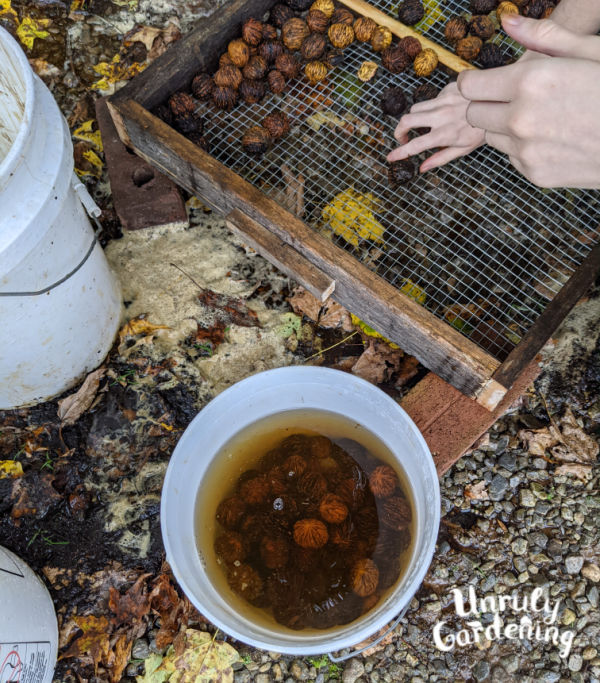
Place a handful of nuts in a bucket of water. Any that float are bad: discard them. Give the bucket a good stir, making sure to do so vigorously enough to disturb the nuts, and check again for floaters once they settle. If they’ve all sunk to the bottom, and none are floating, that means they’re full, good nuts, and you can remove them from the bucket to a different rack to begin drying.
You can crack open some of those floaters to see inside, if you’d like: the reason they float is because there’s an air pocket, inside the nut, which can mean that inside, there could be anything from an incompletely filled nut, to an underripe nut, to a shriveled-up nut, or simply a completely empty nut.
Curing and Drying
Alright, your nuts are clean! Now that you’re done there, it’s time to let them cure and dry.
Spread out the wet, fresh-washed nuts on a screen or place with good air circulation, preferably in the sun, until the moisture is all gone. Stir the nuts once or twice to make sure all the sides get dry.

Once dried, spread the nuts out to keep curing and drying in suitable containers: some people use milk crates. We have a set of screened nut boxes we use that work beautifully. However you do it, watch out for the squirrels! Unprotected nuts will often be stolen right out from under your nose, and even if you protect your nuts, you might find that the squirrels will try and pull off a heist anyway- putting some form of top that still allows air circulation, but is too heavy for a squirrel to move, might be a good idea.
Now that your nuts are spread out, dry, and protected, all that’s left to do is wait! The nuts need to cure for 2-3 weeks before using, so leave them somewhere with good air circulation that’s protected from moisture, and stir them around once a day or so, if you happen to think about it.
Why do I need to cure nuts?
Curing helps dry down the nut meat inside the nut- which is a good thing that we want! Fresh nuts have a tendency to cling stubbornly to the walls of the shell, and are rather watery in flavor. Curing not only makes it easier to harvest the nuts, but improves and condenses the flavor of the nutmeats!
Once they’re finished curing, they’re ready to crack!
Cracking & Storing Black Walnuts
Black walnuts are too tough to be cracked with any old normal nutcracker! Try using a hammer, back of a hatchet, or heavy rock to crack them open, then use a nutpick to remove the nutmeat inside.
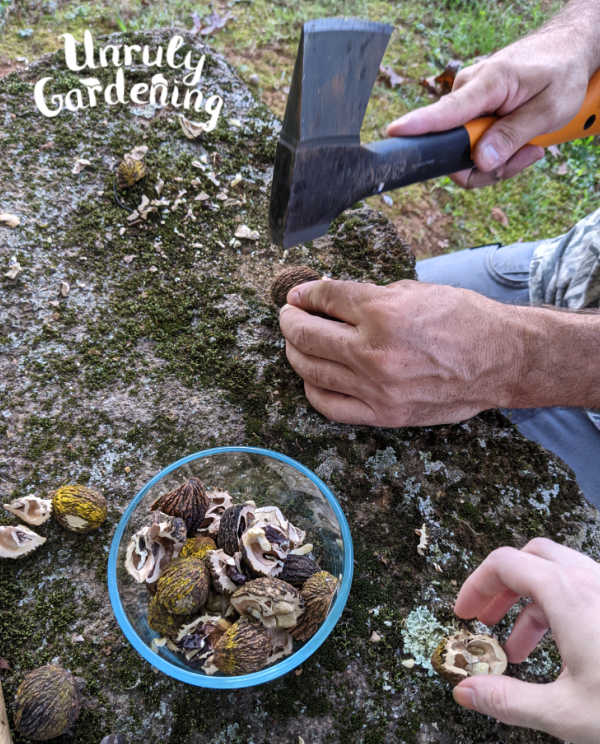
Odds are, you’re not going to get full halves your walnuts, but instead lots of pieces. Don’t worry, they’ll still taste perfectly fine!
Once the nutmeat is removed from the shell, collect them up into a container, label with the date, and freeze. Freezing is the best way to get the longest period of use out of your shelled black walnuts, and will help keep the looming specter of rancidity- the end point of all uneaten nuts- at bay.
From here, use them as you see fit! Eat them plain, roast them, toss a handful into your banana bread, into muffins, candy them… However you so desire to use them, enjoy your foraged feast!
But before you partake…
Just a quick note: If you’re allergic to tree nuts, you really shouldn’t be eating black walnuts. Additionally, those with allergies to tree nuts should not use black walnut hull internally or externally. Avoid internal use if pregnant or nursing.

Uses for Black Walnut Hulls & Leaves
Black walnuts aren’t just for food! The leaves and hulls contain compounds that are useful for natural home remedy purposes too!
Benefits of Black Walnuts
The hulls of black walnuts have antifungal properties and inhibit bacterial growth, so they’re often used to treat extra-tough skin problems.
Black walnut is also used in some livestock animals as a natural dewormer, and in humans for internal parasites.
The nut meat itself (the part of the black walnut that you eat), is nutritious and a natural food to add to a heart-healthy diet!
Video: Foraging Black Walnuts Slideshow
Here’s a slideshow summarizing this article. (Sometimes an ad plays first, but the video will start right after! The video player won’t show up if you have an adblocker.)
Black Walnut Oil & Salve
Use the green hulls to create an easy but effective salve that may be helpful for athlete’s foot, toenail infections, psoriasis, ringworm, and other skin ailments.
You can find our Black Walnut Salve Recipe at our sister site, The Nerdy Farm Wife.
If you have a mystery skin problem and aren’t allergic to nuts – black walnut salve is always worth a try!

How to Make Black Walnut Hull Tincture
Black Walnut Tincture is used externally to spot treat warts, psoriasis, impetigo, or fungal infection/rashes. It’s also considered a natural source of iodine, so some apply it daily to their skin for potential thyroid benefits.
Others use the tincture internally for parasites, especially helpful if traveling to an area with bad water. In his book, The Earthwise Herbal, Volume II, herbalist Michael Moore recommends a low dose of 1 to 3 drops, 1 to 3 times per day. Don’t take for extended times or if pregnant.
To make black walnut tincture:
- Fill a jar 1/2 way with broken up or chopped pieces of green black walnut hulls (avoid mushy blackened parts with worms).
- Next, fill the remainder of the jar with 40 to 50% (80 to 100 proof) vodka.
- Infuse for 4 to 6 weeks, strain.
- Label and store in a cool dark spot for 1 to 2 years.

Black Walnut Leaf Infusion
If hulls aren’t available, or you need something fast, try using the leaf instead. Use walnut leaf infusion similar to a wound wash or dilute iodine wash. It can also be used on irritated or inflamed areas.
To make black walnut leaf infusion:
- Place 1/4 cup chopped fresh leaves in a small saucepan.
- Cover with 3/4 cup water, bring to boil, cover, reduce heat, and simmer for 10 minutes.
- Remove from heat and cool, while still covered, for 5 minutes.
- Makes about 4 ounces of infusion.
- Freeze in ice trays for future use (1 oz per cube = 4 cubes).
Poultice from Fresh Leaves
Black walnut leaves can be used to create a poultice while you’re out and about hiking. Simply mash or chew up some leaves and apply to bug bites, scrapes, or to stop minor bleeding.
We’ve also successfully eased a sore tooth with a leaf poultice placed right beside the offending tooth.
Our articles are for information and idea-sharing only. While we aim for 100% accuracy, it is solely up to the reader to provide proper identification. Be sure to seek out local foraging classes and plant walks, and invest in mushroom and foraging guides suitable for the area you live in, since some wild foods are poisonous, or may have adverse effect.

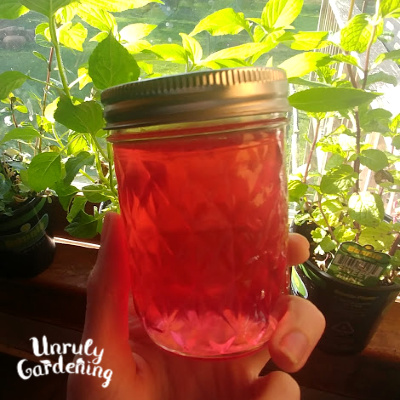
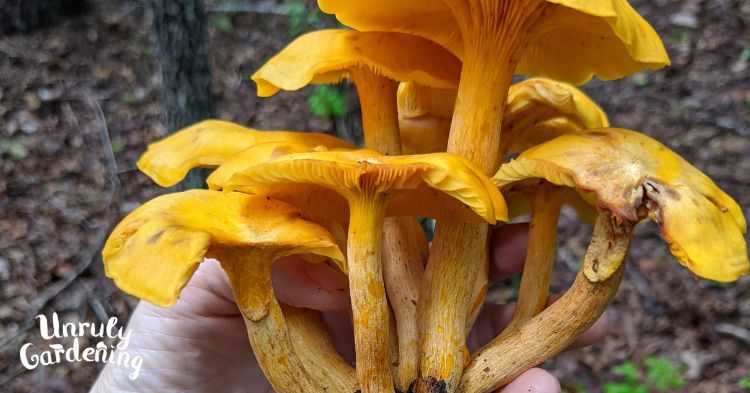
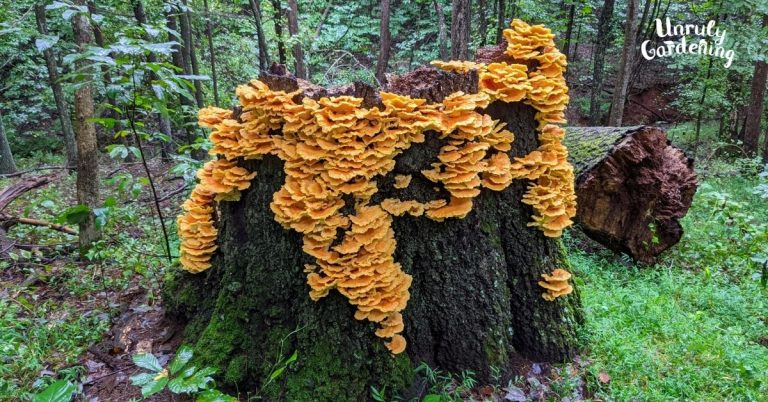
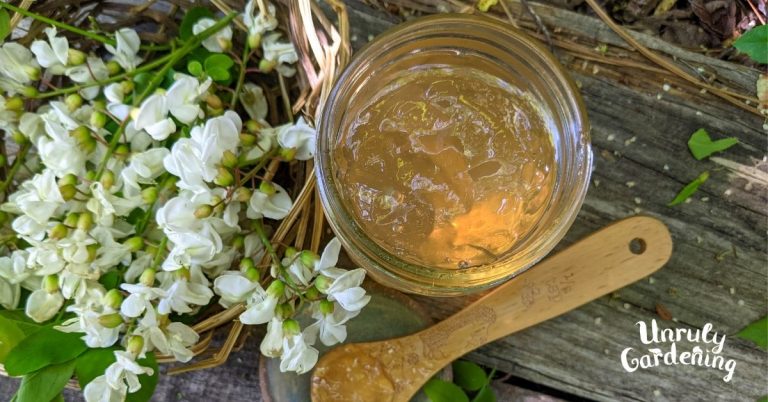
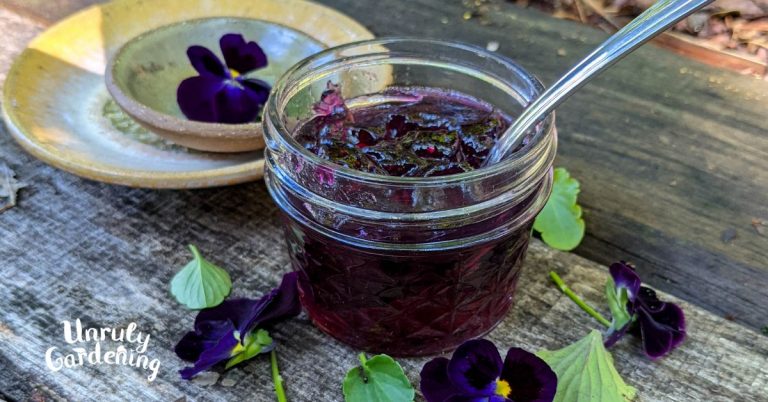
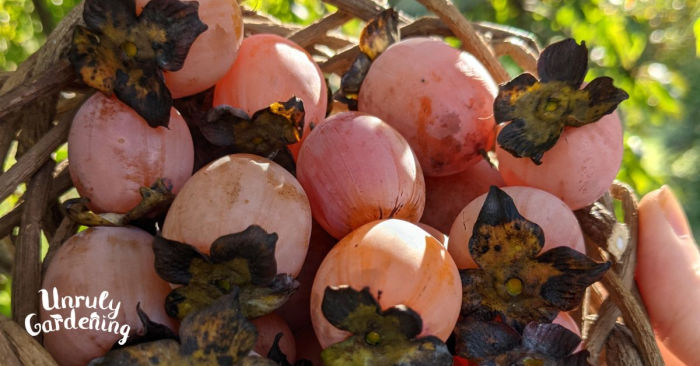
Thanks for sharing about the worms. I gathered some nuts and came across the worms and thought that meant they were not good to use, so I tossed them.Fortunately, I know where to forage more.
Hi Patricia, I’m so glad you found the information useful! Happy foraging!
The worms only feed on the husk not the nut
I found, by accident, the green walnut hulls left soaking in a bucket of water for two or three weeks makes a sure fire way to get worms to come to the top of the ground. Just pour the water off the hulls where you want to harvest nightcrawlers and wait a few minutes. I was amazed at the numbers that I was able to pick up.
Hi Terry, That’s so interesting! Thanks for sharing!
Wow! Thank you so much for all this good information. I really appreciate it since I have few of those black walnut trees and I did not know what to do with the “green balls.” Lots of work ahead of me.
Hi Martha, I’m so glad the information on black walnut trees was helpful! Enjoy your bounty! 🙂
I grew up with my parents having black walnut trees. We do the driveway method. Theirs is gravel and we just toss the walnuts towards the middle so they get run over to break up the hulls. Works great! I just gathered a milk crate full this last weekend when visiting
Hi Kayleigh, Thanks for sharing your handy tip! That’s wonderful that you have a good supply of black walnuts to enjoy!
These are always falling onto the bike trail near my house in the fall. I never knew they could be consumed!
I was curious to see if anyone else has gotten skin reactions from them. I was helping a friend remove a black walnut tree from their yard once, and ended up with swollen, rashy knees and hands (from gathering the walnuts onto a tarp on the ground, while on my knees). Was it the nuts that caused this or possibly another part of the tree?
Hi Laura! It’s very possible to have a reaction to black walnuts – they contain some strong compounds, so there’s always a possibility someone could be sensitive to them.
Did your knees and hands get stained by the juice from the walnuts? If so, then I would be suspect the walnuts themselves.
However, if your hands/knees didn’t get stained, it may be that the crawling-over-bumpy & probably scratchy surface could’ve irritated sensitive skin.
If your knees were bare, another possibility is reacting with the tarp itself. (One of us here is very allergic to plastic type surfaces, and a cheap tarp could be a culprit.)
If your hands got stained by the juices though, I would definitely steer clear of eating black walnuts or using them externally & check with your doctor to see what they think.
hello! this is all so amazing! first time this year making tinctures… tried to get the green hulls in time … but it was late in the season. only have the dried up black hulls of black walnuts including the but inside. Are there any antiparasitic features to the dried hulls? thank you for all your help and information. Walnuts are becoming the next thing this season for health benefits.
Hi Audrey! Yes, you can use the dried black hulls for the same purposes if you can’t get green hulls. 🙂
great information.
I’m wondering about the orange center a few black walnuts have. is this a type of mold? are they safe to eat with the orange center?
my hubby and I are on opposite sides of what this means.
thanks, Barbara
Hi Barbara, Sorry for the delayed reply! We haven’t really ran across something like this that I can recall so I’m just not quite sure either.
If you have a lot of walnuts, then I would just discard the ones you’re not sure about and let the wildlife enjoy them. 🙂
Is the process relatively the same for harvesting butternuts (white walnuts)?
Hi Tammie! It’s similar as far as my understanding, but unfortunately, we don’t have butternuts growing around us so don’t have personal experience harvesting them.
I would definitely check out Forager Chef’s very good article about them though!
https://foragerchef.com/butternuts-white-walnuts/
I’m looking to buy/get some green black walnut husk…..not sure where to get them, im in Texas….help please
KK
Hi KK! You might be able to find local foragers who will connect you with some fresh/green black walnuts when they’re in season.
I would look on Facebook for foraging groups in Texas, and maybe check with local health stores or place where naturalists might congregate & see if they have recommendations.
You might even have a relative or friend who has a tree growing in their yard. The relatives/friends I know think the walnuts are pesky in their yard, so are always happy when someone offers to clean them up in return for the nuts!
I have plenty. Maybe I could mail you some? I think if I did a flat rate shipping box, I could just fill it up and send it off. Did you only want the husks or the whole ball?
I picked up a bunch today because I’d like to try making a salve and a tincture. I love making stuff like that. 😊
where can I get the seeds for
walnuts. l am in Botswana
Africa. l want to grow them
How soon do they need
water
Hi Edison! Unfortunately, I’m not sure how or where to buy plants and seeds to grow in Africa.
I would start by checking with your favorite plant/seed resources and see if they have any suggestions or are able to special order for you.
I wish I could be more helpful, but good luck with your growing ventures!
We moved into a house this year and were surprised to find that we have about a third of a black walnut tree hanging over our fence. It is is a gorgeous tree to be sure…but now that the walnuts are dropping, we were looking for suggestions on what to do with them. I appreciated this article! Thank you!
Hi Kerri, So happy to hear that you enjoyed the ideas for using fresh walnuts!
That’s wonderful to have some right next to your house! 🙂
I have used the wormy nasty mushy part for my horses rain rot. nasty, but no crazy prep needed.
Hi Karen, That’s great information to know! Thanks for sharing!
Hi, I collect black walnuts and save them to feed squirrels and other wildlife, bitter cold sets, and when the bitter cold sets in. I removed the outer green husk, I didn’t take it any further. Some of the nuts have developed a white powder on the outside, is this harmful?
Hi Tracy, I love how you’re feeding the wildlife in the bitter cold!
We do a similar thing with hickory nuts too. 🙂
The white powder sounds like some possible mold. After removing the husk, if you wash the nuts well then let them dry before storing, that will help a ton with that.
I would separate out the ones with the white powder (make little holes & push the whole nuts into the ground to grow potential future trees) & make sure the remaining ones are clean and keep them stored where they get really good air flow. Hopefully you can save most of them that way! 🙂
I wanted to ask if the husk itself turns black is there anything that can be made useful out of it? Is it only green husk that are good to make a tincture? What can be made with the ones that turn dark? And if some have mold on them? Can that be “washed” and repurposed for another application? Very interesting how this one plant has so many possibilities.
Hi Maria! From my reading I learned that many herbalists actually preferred using blackened hulls in times past, but the trend shifted towards using green hulls.
So you could experiment with them and see! I personally avoid using molded ones & just leave them outdoors for critters to eat, natural decomposition, etc.